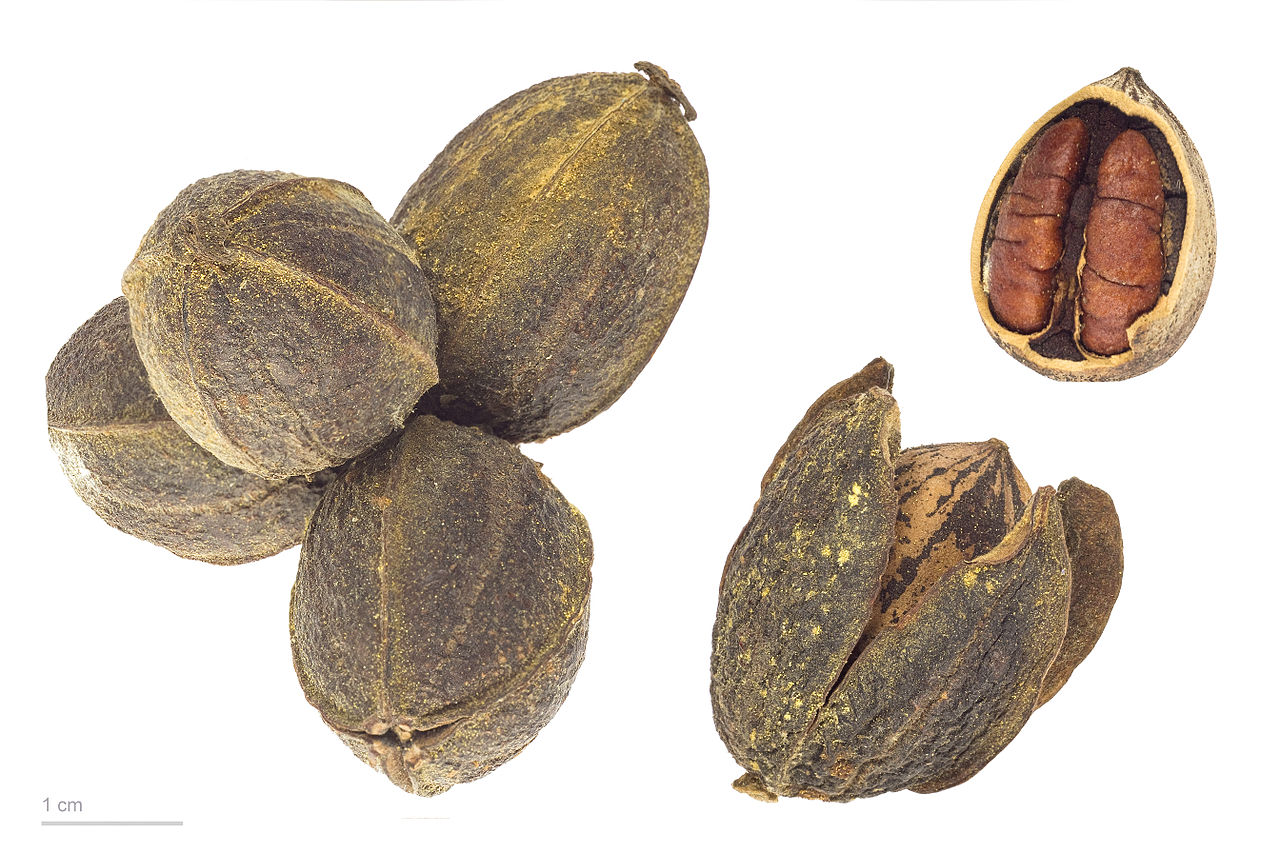Pecan
No. in Woodland Park: 44
No. in good health: 7
No. in fair health: 31
No. in poor health: 6
The pecan (Carya illinoinensis) is a species of hickory native to Mexico and the southcentral and southeastern regions of the United States.
"Pecan" is from an Algonquian word meaning a nut requiring a stone to crack.
The pecan tree is a large deciduous tree, growing to 20–40 m (66–131 ft) in height, rarely to 44 m (144 ft).[2] It typically has a spread of 12–23 m (39–75 ft) with a trunk up to 2 m (6.6 ft) diameter. A 10-year-old sapling will stand about 5 m (16 ft) tall. The leaves are alternate, 30–45 cm (12–18 in) long, and pinnate with 9–17 leaflets, each leaflet 5–12 cm (2.0–4.7 in) long and 2–6 cm (0.79–2.36 in) broad.
A pecan, like the fruit of all other members of the hickory genus, is not truly a nut, but is technically a drupe, a fruit with a single stone or pit, surrounded by a husk. The husks are produced from the exocarp tissue of the flower, while the part known as the nut develops from the endocarp and contains the seed. The husk itself is aeneous, oval to oblong, 2.6–6 cm (1.0–2.4 in) long and 1.5–3 cm (0.59–1.18 in) broad. The outer husk is 3–4 mm (0.12–0.16 in) thick, starts out green and turns brown at maturity, at which time it splits off in four sections to release the thin-shelled nut.
The seeds of the pecan are edible, with a rich, buttery flavor. They can be eaten fresh or used in cooking, particularly in sweet desserts. One of the most common desserts with the pecan as a central ingredient is the pecan pie, a traditional Southern U.S. dish. Pecans are also a major ingredient in praline candy.
In addition to the pecan seed, the wood is also used in making furniture and wood flooring as well as flavoring fuel for smoking meats.


